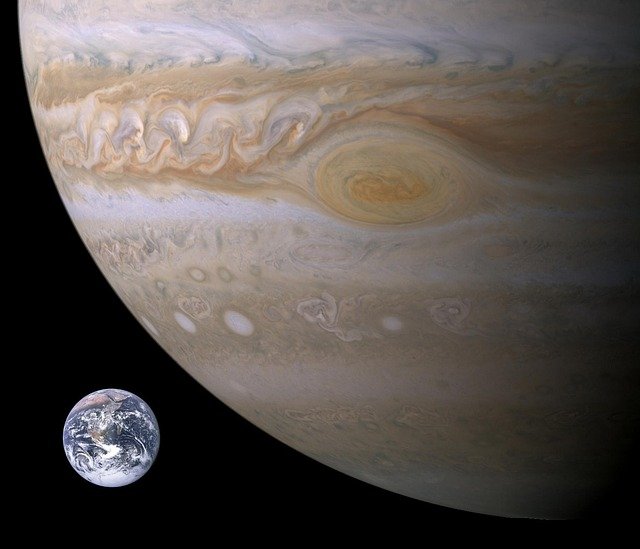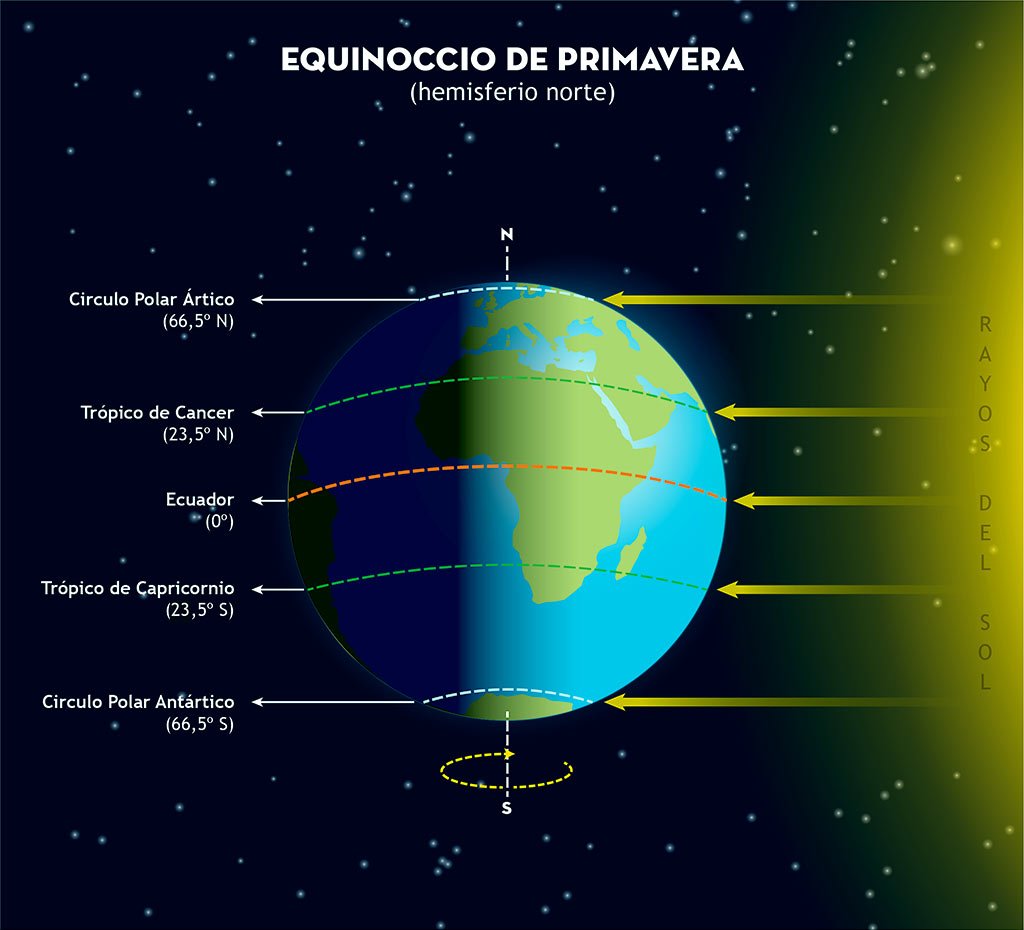March gives us a month full of astronomical phenomena that invite us to contemplate the sky and rediscover our connection with the universe. The undisputed protagonist is the partial solar eclipse of march 29, an unmissable event in Saelices de la Sal that anticipates the spectacular total eclipse that Spain will experience in 2026. But that's not all: the Moon, the planets and the arrival of spring offer us a series of celestial experiences that have fascinated humanity since time immemorial.
The big event: Partial solar eclipse on March 29
On March 29, at dawn, the Moon will come between the Earth and the Sun, generating an impressive partial solar eclipseThis phenomenon will be visible in much of Europe, North Africa and North America. In Saelices de la Sal, we have organised a special day of observation in which, through the use of solar telescopes and live explanations, you will be able to appreciate every detail of the eclipse safely. Remember to follow all safety recommendations: use glasses with an approved solar filter or the appropriate filters on your optical instruments. This activity, carried out in the Starlight Cielos Reserve in Guadalajara, is the perfect opportunity to start experiencing astrotourism in a unique way. Book your ticket here.
Lunar events: Pleiades, Mars and the Micromoon
The Moon, always present in our firmament, is not always in the same place. And we are not just referring to whether it is higher or lower, no. Do you know when we talk about a Supermoon? We are referring to when the Moon looks especially big and bright. This March, the opposite happens: we will have a Micromoon, meaning the Moon will appear approximately 4% smaller in size and 8% less luminous than a typical Full Moon. This difference in apparent size is due to the Moon being at its farthest point from Earth during its orbit, which reduces its visual size in the sky.
Conjunction with the Pleiades

On March 5, the Moon will approach the beautiful star cluster the Pleiades, in the constellation of Taurus, with a separation of just 0°36. Well, this is almost “close together”, yes… but that will happen at 2pm, so we won’t see it. But they will still be very close when night falls. This proximity allows for a spectacular image, perfect for capturing both objects in a photograph and enjoying the contrast between the lunar disk and the glow of this magnificent star cluster. A challenge for professionals or lovers of this noble art.
Do you remember when your grandfather told you about the Seven Little Goats? Well, he was referring to the Pleiades, also known as the “Seven Sisters” and who hold a special place in Greek mythology. According to tradition, they were the daughters of the Titan Atlas and the nymph Pleione, and their image has been the inspiration for numerous legends, works of art and astronomical constructions throughout history. Their influence is reflected in the symbolism of fertility, union and connection with the cosmos.
Meeting with Mars
On March 9, the Moon will be in conjunction with Mars in the constellation of Gemini. This event is ideal for observing Mars, which continues to dazzle with its characteristic reddish colour and prominent position in the night sky. The proximity of the Moon also makes it easier to locate the planet, making this night an unmissable event for astronomy enthusiasts.
Full Moon and the Starry Night Experience
On March 14th, the Full Worm Moon. This phenomenon is atypical, since, due to the greater distance from Earth, the Moon will appear as a Micromoon, somewhat smaller and less bright than usual. The next day, March 15, although the exact moment of the Full Moon has passed, our satellite will continue to offer a remarkable spectacle. Tonight is the perfect opportunity to enjoy the astrotourism experience in the Starry Night that we organized in Saelices de la Sal. More information here.
Finally, on March 29, the New moon This will provide optimal conditions for deep sky observation, eliminating interference from the moonlight. But remember, before that, in the morning, part of it will pass in front of the sun and we will be able to see a partial solar eclipse.
Planetary panorama in March
After enjoying a magnificent planetary alignment with up to 7 planets in February, in March we turn our attention to the brilliant nocturnal planetary scene.
Mars and Jupiter in the sky

This month, Mars and Jupiter continue to be two of the protagonists of the night sky. Mars, visible in the constellation of Gemini, stands out for its unmistakable reddish hue, while Jupiter, which appears in the constellation of Aries, dazzles with its imposing presence. It should be noted that, while Saturn is no longer visible on our horizon, marking the end of its observation stage, Neptune It has become extremely difficult to distinguish due to its proximity to the Sun.
Venus in double shift
Between March 18 and 21, Venus will surprise us by being visible both at dawn and at dusk. This phenomenon, which occurs around its inferior conjunction with the Sun (expected for March 23), is rare and adds a special touch to the nighttime spectacle. From then on, we will be able to see it, above all, at dawn. It will cease to be the evening star and will become the morning star.
Mercury and company on the morning horizon
Mercury will gradually rise above the horizon each day, reaching its highest point around March 9-10, after which it will begin to descend again. Its brightness will gradually fade as the days go by. On March 29, Mercury will accompany Venus in the dawn, but its light will be so subtle that only those with keen eyesight will be able to distinguish it. To close this delicate morning show, Saturn will join them on March 31, adding its serene presence to the celestial ensemble.
March Equinox: The beginning of spring
On March 20, at 09:02 GMT, the March equinox, marking the beginning of spring in the Northern Hemisphere and the start of autumn in the Southern Hemisphere. This day, when the length of day and night are almost equal all over the world, has been celebrated and observed by ancient civilizations, who erected monuments and developed rituals around this phenomenon. The importance of the equinox lies not only in the seasonal change, but also in its role in agricultural organization and in cultural festivities that celebrate renewal and hope.

Time change
Although both the European Parliament and the Commission have spoken out in favour of eliminating time changes in the future, there is still no definitive decision on the matter. Therefore, during 2025, the traditional time change that takes place on the last Sunday in March will continue to be in force. On that day, March 30thAt 2 a.m. peninsular time, we will move the clocks forward one hour to 3 a.m. In the Canary Islands, 1 a.m. will become 2 a.m. (This paragraph is original from the National Astronomical Observatory (IGN, Ministry of Transport and Sustainable Mobility)
March offers us a spectacular astronomical panorama, in which the interaction between the Moon, the planets and the Sun invites us to explore the universe in a unique way. From the partial solar eclipse in Saelices de la Sal to the Starry Night experience and the brilliant planetary setting, each event is an opportunity to reconnect with the immensity of the sky. Don't miss it and come and enjoy it with us at the Starlight Cielos de Guadalajara Reserve!

